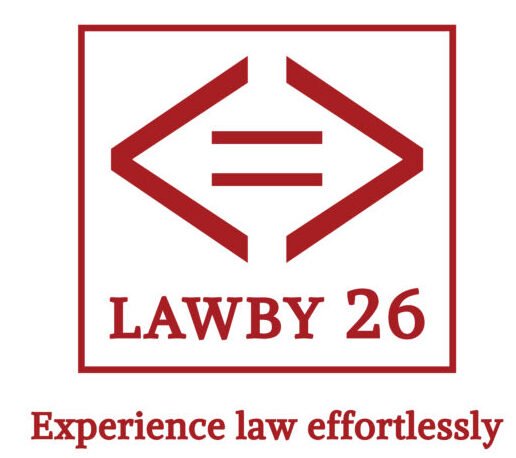Adoption Rights Of LGBTQ Couples In India
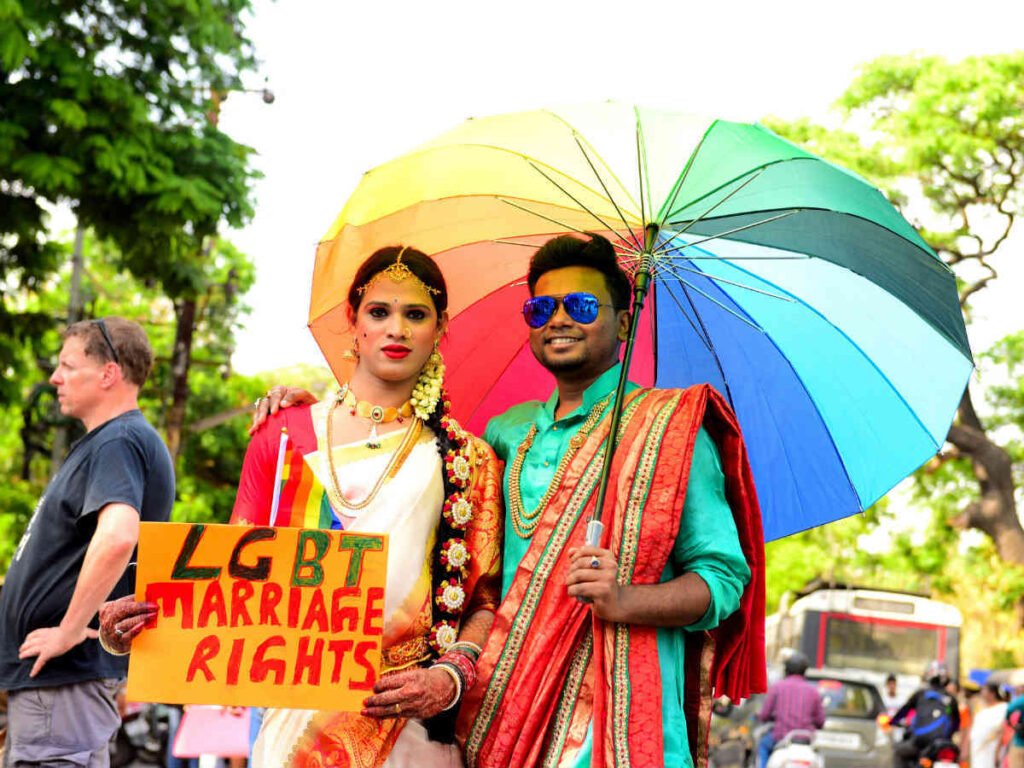
The struggle of the LGBTQ community has been a long drawn out battle for rights and recognition. Following the judgment of the Supreme Court in Navtej Singh Johar v. Union of India[1], wherein the Apex Court read down Section 377 to decriminalise all consensual sex between adults, including homosexual sex, several Constitutional Courts have come out with progressive judgments which have bolstered awareness and issues surrounding the community. While society comes to terms with the community and despite having the legal recognition and protection of the law, members of the community struggle with basic rights such as those relating to matrimony and adoption. In this article, we will attempt to decode the legal framework of adoption in India and the provisions for LGBTQ members within such a framework. Juvenile Justice Act, 2015 Adoption is defined under Section 2(2) of The Juvenile Justice (Care And Protection Of Children) Act, 2015 as the process through which the adopted child is permanently separated from his biological parents and becomes the lawful child of his adoptive parents with all the rights, privileges and responsibilities that are attached to a biological child. Section 57, which provides for eligibility of Prospective Adoptive Parents (PAPs), adopts in addition to the requirements listed the criteria for adoption under regulations framed by the authority, i.e. the Central Adoption Resource Authority. By virtue of the Adoption Regulations, 2017, now a couple who doesn’t have at least 2 years of solid marital relationship. Hindu Adoption and Maintenance Act, 1956 Chapter II (Ss 5-17) of the Hindu Adoption and Maintenance Act, 1956 (hereinafter referred to as ‘HAMA’) deals with Adoptions. Section 6 of the Act lays down the requisites for adoption. The Section provides that no adoption shall be valid unless: [1] Navtej Singh Johar v. Union of India, (2018) 10 SCC 1 Section 7 and Section 8 of the Act provide the capacity of male and female to take in adoption but there is no provision for third genders. A male or female can adopt if he or she is of sound mind and is not a minor who has the capacity to take on a daughter in adoption. If the male has a wife, he shall take her consent and if the female has a husband, she shall take his consent unless the husband or wife is declared to be of unsound mind, has completely renounced the world, or has ceased to be a Hindu. However, the Act fails to deal with LGBTQ couples. There are certain other conditions laid down in Section 11 of the Act. If the adoption is of a son, then the adoptive mother or father should not have a son, son’s son or son’s son’s son during adoption. If it is a daughter then the adoptive parents should not have a Hindu daughter or son’s daughter (whether by legitimate blood relationship or by adoption) living at the time of adoption. Similarly, while adopting a child of the opposite gender, such child should be at least twenty-one years older than the person who wishes to adopt. Adoption Regulations, 2017 Established under the Ministry of Women and Children, The Central Adoption Resource Authority serves as the nodal point to oversee and regulate adoptions, both domestic and international. The body was established in 2003 after India adopted the Hague Convention on Intercountry Adoption, 1993. Under Section 68(c) of the Juvenile Justice (Care and Protection of Children) Act, 2015, the body has been empowered to frame rules and regulations, in accordance with which it has notified the Adoption Regulations of 2017. The Regulations are a lot more stringent in comparison to HAMA. As opposed to HAMA, the Regulations go above and beyond and prohibit a single man from adopting a female child irrespective of the age difference prescribed under HAMA. To summarize, while an individual member of the LGBTQ community may adopt a child under the existing framework, LGBTQ couples will not be able to adopt and co-parent a child as a couple as the law fails to recognize the validity of a marriage of a same sex couple and since existing laws and regulations mandate the existence of a marital relationship, they will be unable to do so. However, the judicial institution is keeping pace with changes in society. In Arun Kumar Sreeja v. Inspector General of Registration, Arun Kumar got married to a transwoman Sreeja, where the registrar refused to register their marriage. In disposing their petition before it, the Madras High Court held the marriage was valid and transgender persons had the right to decide their self-identified gender.[1] The right to marry a person of one’s own choice is also considered as an integral part of Article 21 of the Constitution of India.[2] Therefore, the Court held that the non-registration of their marriage would amount to a violation of Articles 14, 19(1)(a), 21, and 25 of the Constitution of India. Since there is no provision for recognizing the validity of same-sex marriages in India, existing laws ought to be amended to provide for the same. Since most legislations governing adoptions were enacted prior to the judgment of the Supreme Court in Navtej Singh Johar, they fail to recognize or provide for their rights. However, the law must be harmoniously amended and interpreted to keep pace with the changes in society and community. [1] NALSA v. Union of India, (2014) 5 SCC 438, [2] Shafin Jahan v. Asokan K.M., 2018 SCC Online 343
BEGGING LAWS IN INDIA: AN OVERVIEW
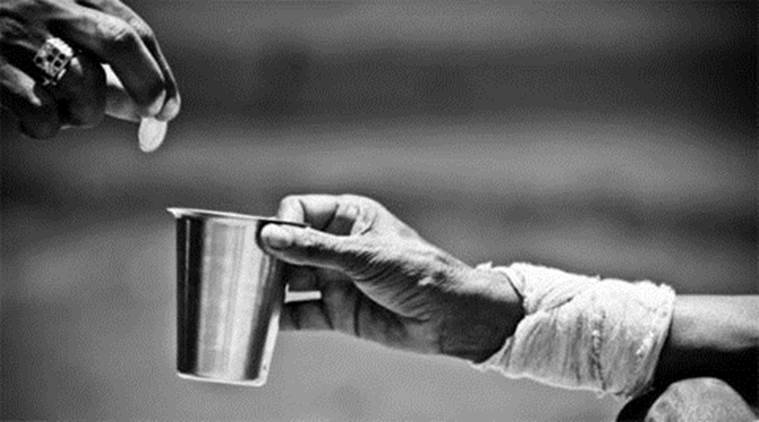
While in India, we may have noticed several people around us beg – from children to the elderly – individuals who are left to the mercy of others for their survival and basic necessities. It is a socio-economic problem that can be associated with poverty, unemployment, or having been socially outcast from family or society, as is the case with transgenders and those mentally ill or physically handicapped. Several countries have enacted laws in relation to begging, either expressly prohibiting and/or criminalizing the act. In India, there is no Central Legislation which deals with begging and is left to the wisdom of the States/Union Territories to legislate on the matter wherein 19 States and 3 Union Territories have enacted laws[1] to varying degrees of prohibiting, penalizing and/or criminalizing the act of begging. The List of States/UT’s and the Corresponding Legislation is as follows: STATES/UNION TERRITORIES LEGISLATION IN FORCE Andhra Pradesh The Andhra Pradesh Prevention of Beggary Act, 1977 Assam The Assam Prevention of Begging Act, 1964 Bihar The Bihar Prevention of Begging Act, 1951 Chhattisgarh Adopted the Madhya Pradesh Bikshavirty Nivaran Adhiniyam, 1973 Goa The Goa, Daman & Diu Prevention of Begging Act, 1972 Gujarat Adopted the Bombay Prevention of Begging Act, 1959 Haryana The Haryana Prevention of Begging Act, 1971 Himachal Pradesh The Himachal Pradesh Prevention of Begging Act, 1979 Jammu & Kashmir The J&K Prevention of Begging Act, 1960 Jharkhand Adopted the Bihar Prevention of Begging Act, 1951 Karnataka The Karnataka Prevention of Begging Act, 1975 Kerala The Madras Prevention of Begging Act, 1945, the Travancore Prevention of Begging Act, 1120 and the Cochin Vagrancy Act, 1120 are in force in different areas of the State. Madhya Pradesh The Madhya Pradesh Bikshavirty Nivaran Adhiniyam, 1973 Maharashtra The Bombay Prevention of Begging Act, 1959 Punjab The Punjab Prevention of Begging Act, 1971 Sikkim The Sikkim Prohibition of Beggary Act, 2004 Tamil Nadu The Madras Prevention of Begging Act, 1945 Uttar Pradesh The Uttar Pradesh Prohibition of Begging Act, 1972 Uttarakhand Adopted the Uttar Pradesh Prohibition of Begging Act, 1972 West Bengal The West Bengal Vagrancy Act, 1943 Dadra and Nagar Haveli and Daman & Diu The Goa, Daman & Diu Prevention of Begging Act, 1972 Delhi Adopted the Bombay Prevention of Begging Act, 1959 [1] http://164.100.24.220/loksabhaquestions/annex/14/AS357.pdf THE TAMIL NADU PREVENTION OF BEGGING ACT, 1945 The Tamil Nadu Prevention of Begging Act was enacted on 24th June 1945 with the intent to “provide for the prevention of begging for the detention and employment of beggars and their dependents in work-houses or special homes, and for the custody, trial and punishment of beggar offenders in the State of Tamil Nadu”.[1] Let us first understand what constitutes begging for the purposes of the Tamil Nadu Prevention of Begging Act, 1945 (hereinafter referred to as the ‘Act’). Section 2(1) defines ‘begging’ as- (i) soliciting or receiving alms in a public place, whether under the pretense of singing, dancing, performing tricks or selling articles or otherwise; (ii) entering on any private premises for the purpose of soliciting or receiving alms; (iii) exposing or exhibiting, with the object of obtaining or extorting alms, any sore, wound, injury, deformity or disease, whether of himself or of any other person or of an animal; (iv) allowing oneself to be used as an exhibit for the purpose of soliciting or receiving alms; but does not include soliciting or receiving money or food or gifts for such purposes as may be prescribed. PENALTY, PUNISHMENT AND POWER OF POLICE TO ARREST FOR BEGGING Section 3(1) of the Act provides that whoever is seen begging in public places shall be fined up to ₹ 50 on the first conviction and/or imprisoned for up to one month. On subsequent conviction, the imprisonment may extend to six months. Section 3(2) empowers any police officer to arrest any person who is found to be begging without a warrant. However, any such person who is begging within a private premise cannot be arrested without a complaint from the occupier of such private property. [1] Preamble ( The Tamil Nadu Prevention of Begging Act 1945). PROVISION(S) FOR MEDICAL EXAMINATION Section 5 of the Act provides that whenever a person is arrested under begging s/he shall be produced before the Magistrate within 24 hours of the arrest after which s/he shall be examined by a medical professional not below the rank of Assistant surgeon. After such examination, the examiner must issue a certificate attesting to the convict’s age and labour capacity. If it is found by the medical professional that the arrested person is a leaper, the Magistrate may order him to be detained indefinitely in a leper asylum appointed under Section 3 of the Lepers Act, 1898 (Central Act III of 1898).[1] The leper may be released when a medical officer certifies the detained person has fully rehabilitated. The magistrate can also release a leper whom they consider suitable with or without surety. And making him fully responsible for his housing, medical treatment and maintenance of such a person and for preventing him from begging or being used for the purpose of begging.[2] PROVISION(S) FOR DEALING WITH JUVENILE-BEGGAR OFFENDERS As per Section 6 of the Act, if it is found that the arrested person has not attained the age of 18 years, the child should be brought before the Juvenile Justice Home without any delay with the certificate issued by the medical examiner. Section 12(2) provides that if it is found that a child arrested under beggary, has not attained the age of 14 years and he doesn’t have a parent, guardian, home or has parents with criminal or drunken habits, then the Court may pass an order under sub-section (1) of Section 29 of the Tamil Nadu Children Act, 1920. [1] Section 10A(1), Tamil Nadu Prevention of Begging Act, 1945 [2] Section 10A(2), Tamil Nadu Prevention of Begging Act, 1945
CUSTODIAL VIOLENCE AND HUMAN RIGHTS – INTERNATIONAL AND INDIAN PERSPECTIVES

There is no exception for human rights for the accused. Article 14 affords equal protection to all under the law and Article 21 includes within itself a guarantee against torture and assault by the State and/or its functionaries.[1] In the case of Tukaram and Anr. v. The State of Maharashtra[2], Madan B. Lokur, J. opined that “Custodial violence has always been a matter of great concern for all civilized societies. Custodial violence could take the form of third-degree methods to extract information; the method used need not result in any physical violence but could be in the form of psychological violence. Custodial violence could also include a violation of bodily integrity through sexual violence it could be to satisfy the lust of a person in authority or for some other reason”. Human rights are inalienable rights inherent in all human beings, regardless of race, sex, nationality, ethnicity, language, religion, or any other status. Therefore, any such mental or physical torture in the custody could amount to a gross violation of human rights. International Conventions India, being a signatory to the Universal Declaration of Human Rights (UDHR), and the International Covenant on Civil and Political Rights (ICCPR), and is bound by the broad principles enshrined thereunder follow it. In the case of K.S. Puttaswamy v. Union of India, the court noted “India is a responsible member of the international community and the Court must adopt an interpretation which abides by the international commitments made by the country, particularly where its constitutional and statutory mandates indicate no deviation.”[3] A)The Universal Declaration of Human Rights, 1948 The Universal Declaration of Human Rights was adopted by the United Nations General Assembly, which enshrines the rights and freedoms of all human beings and tries to safeguard human rights universally. Article 5 of the Declaration states that “No one shall be subjected to torture or cruel, inhuman or degrading treatment or punishment” B) The International Covenant on Civil and Political Rights, 1966 [1] D.K. Basu v. State of West Bengal, AIR 1997 SC 610. [2] Tukaram and Anr. v. The State of Maharashtra 1978 Cr.L.J.1864 [ 25 ] [3] K.S. Puttaswami (Retd.) v. Union of India, (2017) 10 SCC 1 The International Covenant on Civil and Political Rights is a multilateral treaty that aims to uphold and protect all the civil and political rights of individuals globally. Article 9(5) of the Covenant (ICCPR), provides that anyone who has been the victim of unlawful arrest or detention shall have an enforceable right to compensation. C) United Nations Convention Against Torture, 1987 The United Nations Convention Against Torture, which the UN General Assembly adopted in 1984, aims to curb torture and inhumane treatment in any form. A total of 136 countries have ratified this convention with India being a signatory to Convention. Protection of Human Rights Act, 1993 The Protection of Human Rights Act provides for the establishment of the National and State Human Rights Commission(s) and bestows them with wide-ranging powers to prevent the violation of human rights. Section 12 of the Act empowers Commission(s) to intervene and take suo moto cognizance of cases that involve gross violation of Human Rights. Human Rights Commission can visit jails or any institutions under the government where persons are detained for reformation and treatment and advise the government on the conditions of the inmates. As per Section 16 of the Act, during any stage of the inquiry, if the commission considers it necessary to inquire into the conduct of any person or feels the reputation of any person is being affected then the commission shall give an opportunity for the person to be heard and produce evidence to defend himself. Following such procedure, if any public servant is found to be guilty of the violation of human rights of any person, then the concerned government shall be made liable to pay compensation and damages to the affected person, and prosecution proceedings shall be initiated.[1] In the case of Nilabatibehera v. State of Orissa[2], the Supreme Court of India, while taking suo moto cognizance of the case via a letter received from Nilabati Behra who was seeking justice for her son who expired in police custody, made significant observations in regards to the right to life of undertrial prisoners. While considering the evidence placed before it, the Court ruled that it was a case of custodial violence and awarded the Petitioner, Ms. Nilabati Behera, a compensation of Rs. 1.5 lac using the powers bestowed upon it under Article 32 and 142 of the Constitution of India. The Court made a significant observation and laid the principle that monetary compensation ought to be provided under public law for violation of Fundamental Right, including those of undertrial prisoners. [1] Section 18, Protection of Human Rights Act, 1993. [2] Nilabatibehera v. State of Orissa, (1993) 2 SCC 746 CONCLUSION As held in the case of Bhagwan Singh v. the State of Punjab [1] “The vulnerability of human rights assumes a traumatic torture when functionaries of the State whose paramount duty is to protect the citizens and not to commit gruesome offenses against them, in reality, perpetrate them”. The Preamble of ICCPR states that it is the obligation of States under the Charter of the United Nations to promote universal respect for, and observance of, human rights and freedoms. Although there are many laws against custodial violence, there are plenty of cases coming up day by day, therefore the government shall immediately take necessary actions to curb custodial violence. [1]Bhagwan Singh v. the State of Punjab, (1992) 3 SCC 249
CUSTODIAL VIOLENCE
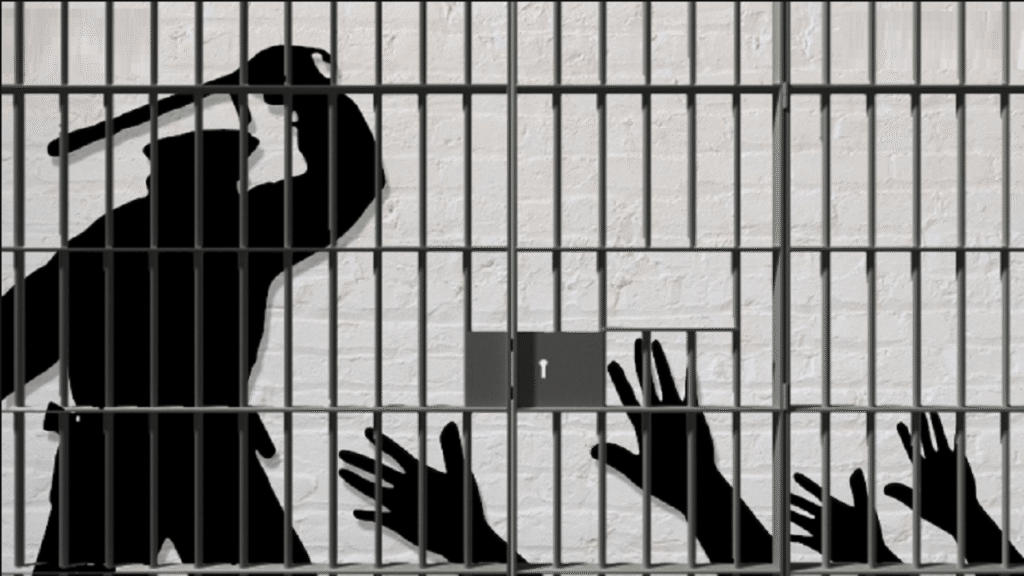
When a crime is committed, there are certain rights available for the accused including but not limited to the right to be heard, the right to free legal aid, the right against torture, the right to food, clothing, medical check-ups, etc. Any person who is arrested by the police should be produced before the magistrate within 24 hours of such arrest, which is a Fundamental Right enshrined under Article 22(2) of the Constitution. During the course of investigation or detention, the accused should neither be tortured in police custody nor in judicial custody; however, there are many such instances in which they occur – either for securing a confession or to extract a false statement, in the instance of which it amounts to custodial violence. In 1993, the National Human rights commission instructed that any custodial death must be reported within 24 hours. Post-mortem reports, Magisterial Inquest reports, postmortem video reports, etc. are to be attached with the intimation.[1] There is no provision that specifically deals with custodial violence in India. However, an attempt has been made to tackle and address the same vide provisions under Criminal Law & Procedure. These are: Section 330, Section 331, Section 376B, Section 376C and Section 348 of the Indian Penal Code, 1860; Sections 25 & 26 of the Indian Evidence Act 1872; Section 76 of Criminal Procedure Code, 1973 and Section 29 of the Police Act, 1861. Safeguards under Indian Law Constitution of India, 1950 Article 22 which deals with protection against arrest and detention in certain cases, enunciates that any person who is arrested should be informed on what ground he is arrested and he should be allowed to consult a lawyer[2] and provides that any person shall be produced before the Magistrate within 24 hours of his arrest[3]. The Indian Penal Code, 1860 Section 330 and Section 331 deals with Voluntarily causing hurt/grievous hurt to extort confession, or compel restoration of property. According to these Sections, anyone who causes hurt to any other for the purpose of extorting any confession or information which leads to the detection of any offense or compels any person for the restoration of a property or to give information regarding it or any valuable security shall be punished with an imprisonment of 7 years and fine. If it is grievous hurt, imprisonment will be for 10 years. If someone is wrongfully confined and harmed to extract a confession or compelled for restoration of property, he will be imprisoned for three years and fined under section 348 of IPC. If any public servant or superintendent of jail abuses his power and authority and has intercourse or seduces a woman in custody shall be punishable for a term which may extend to five years and fine under Section 376B and Section 376C. The Criminal Procedure Code, 1973 Section 76 enunciates that an arrested person must be brought before the magistrate without unnecessary delay and that the delay shall not exceed 24 hours. Section 174 states that if any person commits suicide or dies by accident in the police custody the officier incharge shall immediately give the intimation to the nearest Executive Magistrate and shall proceed to the place where the deceased body is and an investigation of the apparent cause of death has to be done in the presence of two inhabitants. Section 176(1) provides that when any person dies while in the custody of police the nearest magistrate shall hold an inquiry into the cause of death of the person. Indian Evidence Act, 1872 Section 25 and Section 26 of the Act deals with confessions made to the police officer, the confessions made to the police officer cannot be proved against a person accused of any offense or oneself. The Police Act, 1861 According to Section 29 of the Act, any police officer who: Shall be punished by either penalty not exceeding his 3-month pay or imprisonment with or without hard labour for a period of three months. [1] https://nhrc.nic.in/press-release/nhrc-issues-fresh-guidelines-regarding-intimation-custodial-death#: [2] Article 22(1), Constitution of India, 1950 [3] Article 22(2), Constitution of India, 1950
ARTICLE 21 IN THE AFTERLIFE: RIGHTS TO DIGNITY OF THE DECEASED
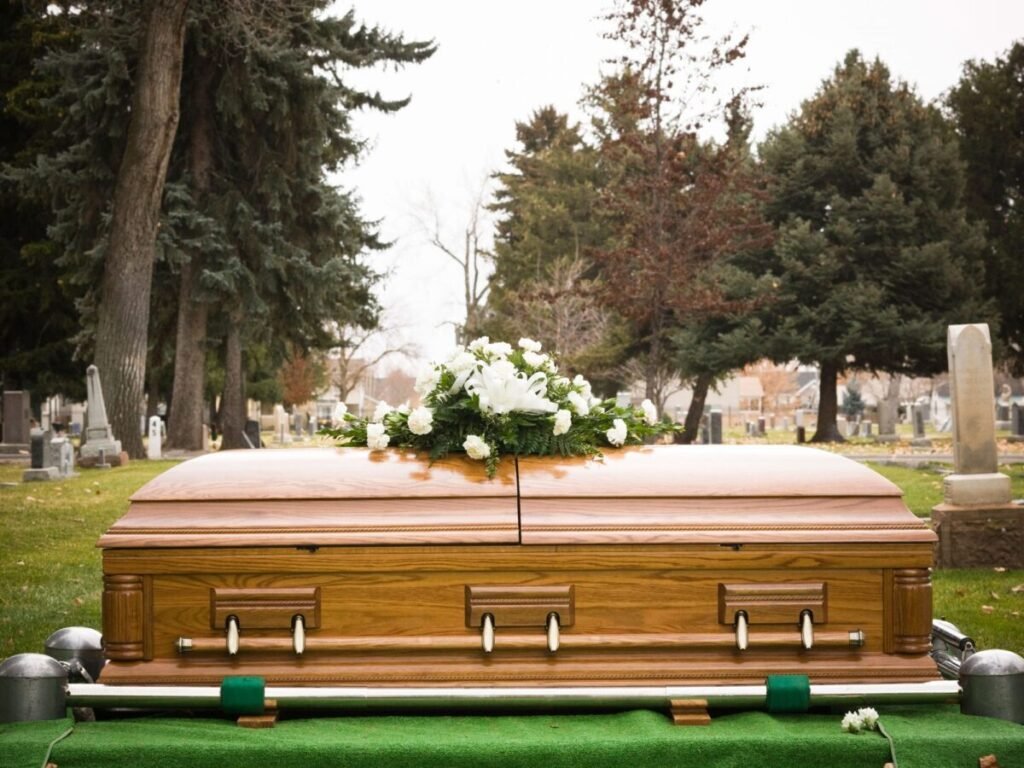
The right to life under Article 21 of the Indian Constitution, which guarantees the right to life and personal liberty, encompasses many aspects of a person’s life. Through an evolution of judgments by the Constitutional Courts, the provision has been interpreted and expanded to include the right to health[1], privacy[2], livelihood[3] and a plethora of other ancillary rights which make life more than a mere animal existence[4]. Article 21 of the Constitution of India guarantees protection of life and personal liberty of all persons but does this protection extend beyond the life of a person and into his/her afterlife? What are the rights enjoyed by the dead and deceased under the Constitution? While there is no explicit law which protects the rights and dignity of the dead and deceased in India, specific provisions under legislative enactments either provide for or existing provisions have been interpreted to a wider scope to recognize the rights of the dead. Article 21, which by itself guarantees protection of right to life, has been interpreted to extend human dignity into the afterlife. The Supreme Court in the case of Parmanand Katara v. Union of India[5], for the first time recognized the dignity of the dead and held that the right to life, fair treatment and dignity extends not only to a living person but also their dead bodies after death. The stance of the Apx Court was amplified by its ruling in Ashray Adhikar Abhiyan v. Union of India[6] where it reiterated its stance by extending the right to dignity of the dead translating to a right to a decent burial in accordance with their respective faith, customs and practices including for the homeless-deceased unclaimed dead bodies. Following the footsteps of the Supreme Court, several judgments from the High Court have also affirmed and interpreted the same in different cases. In the case of S. Sethu Raja v. Chief Secretary[7], the Madras High Court, while ruling on a plea for the return of a dead body of a migrant worker in Malaysia, directed the Government authorities to bring the body so that the burial can take place in accordance with the family’s customs and traditions. In Ramji Singh & Mujeeb Bhai v. State of Uttar Pradesh[8], the Allahabad High Court, while dealing with a petition in respect of the appalling conditions of a mortuary set up by the Government of Uttar Pradesh, contended that the right to life extended to the dead body of the person by means of providing a decent burial and imposing a responsibility on the State Government to ensure preservation and disposal of the body in accordance with dignity and respect which the person deserves as when s/he would have been alive. In the case of R.S. Bharati v. Government of Tamil Nadu[9], the Madras High Court in dealing with a petition for the laying of the mortal remains of Dr.Kalaignar M.Karunanidhi, former Chief Minister of Tamil Nadu, ruled and reiterated the judgment of the Supreme Court in Parmanand Katara which held that the right to fair treatment and dignity extends to the dignity of the individual. The relevance and significance of the right of the dead and deceased was all the more necessary during the COVID-19 pandemic in India where during the second wave, several bodies were piling away and there was delay in the disposal there owing to the fear and social stigma attached to the virus. Several High Courts including that of Bombay[10] and Madras[11] High Court, took cognizance of the same and passed important orders which upheld and reiterated the right to a decent burial with dignity to be a part and parcel of right to life under Article 21 of the Constitution of India. [1] State of Punjab v. M.S. Chawla, AIR 1997 SC 1225 [2] K.S. Puttaswamy v. Union of India, 2017 10 SCC 1 [3] Olga Tellis v. Bombay Municipal Corporation, AIR 1986 SC 180 [4] Kharak Singh v. State of Uttar Pradesh, AIR 1963 SC 1295 [5] Parmanand Katara v. Union of India, MANU/SC/2328/1995 [6] Ashray Adhikar Abhiyan v. Union of India, MANU/SC/0018/2002 [7] S. Sethu Raja v. The Chief Secretary, 2007 (5) MLJ 404 [8] Ramji Singh & Mujeeb Bhai v. State of Uttar Pradesh, (2009) 5 Alj 376 [9] R.S. Bharati v. Government of Tamil Nadu, (2018) 4 CTC 673 [10] Pradeep Gandhy v. State of Maharashtra, 2020 SCC OnLine Bom 662 [11] Suo Moto W.P. No. 7492 of 2020
RIGHTS OF LGBTQ COMMUNITY VIS-A-VIS SURROGACY
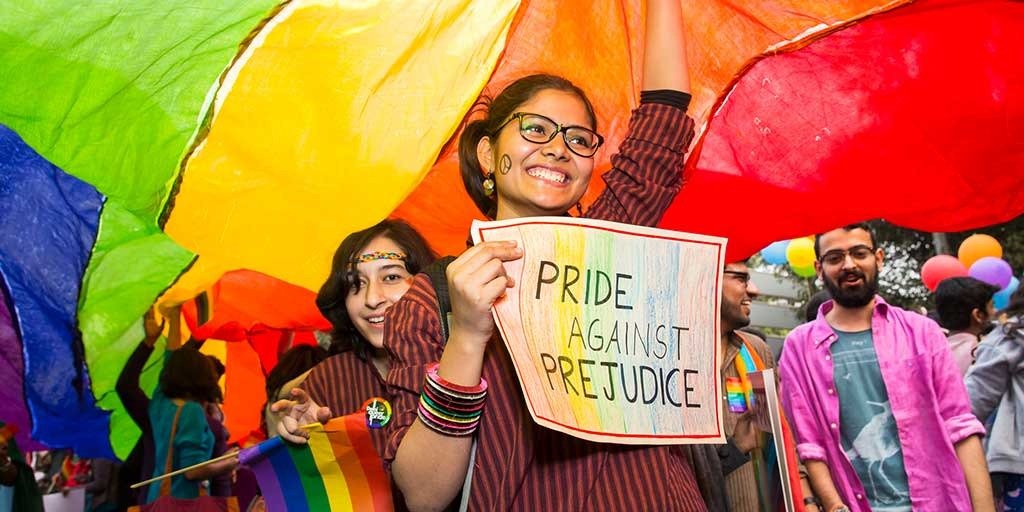
In India, surrogacy is defined and dealt under the The Surrogacy (Regulation) Act, 2021. Section 2(zd) of the Act defines “surrogacy” to mean a practice whereby one woman bears and gives birth to a child for an intending couple with the intention of handing over such child to the intending couple after the birth. The Surrogacy (Regulation) Act, 2021, however, does not recognise and provide for the rights of LGBTQ couples even though it recognises single woman and live-in couples. The right to become a parent is considered as a human right and it is very unfortunate that the LGBTQ community is being discriminated against in many such aspects merely because of the ethical beliefs of the society. Being a same-sex couple means that they can’t bear a child of their own and have to resort to other methods such as adoption or surrogacy to become a parent, either adoptive or natural. In the wave of change that is It is high time the country changed its approach to recognize and support this community in allowing them to build and cherish a family of their choice. The Surrogacy (Regulation) Act, 2021 According to Section 2(r) of the Act, an ‘intending couple’ means a couple who have a medical indication necessitating gestational surrogacy and who intend to become parents through surrogacy, and an ‘intending women’ means an Indian woman who is a widow or divorcee between the age of 35 to 45 years and who intends to avail the surrogacy[1]. This Act also provides that a surrogacy can only be availed if there is a medical indication necessitating gestational surrogacy, or if its for altruistic surrogacy under Section 4(ii)(a) and (b). Section 4(iii) of the Act enunciates that the surrogacy procedure should not be initiated unless the conditions prescribed in the Act is not fulfilled. It says that the intendening couples shall possess a certificate issued by the authority after fulfilling certain requirements like that of certificate of medical indication from a District Medical Board favouring either or both the member of the couple or the intending woman necessitating gestational surrogacy, an order passed by the First Class Magistrate court regarding the parentage and custody of the child born, a 36 month insurance covering postpartum delivery complication. According to Section 4 (iii)(c) an eligibility certificate is also issued separately by the concerned authority to the intending couples only if they comply with the provisions specified. An intending couple should be married between the age of 23-50 years in case of female and male between the age of 26- 55 years, they should neither have an surviving child during surrogacy if the child is either physically or mentally challenged with no permanent cure and there should be a certificate regarding the same by the medical board. From the above Sections it can be observed that the Act is not conducive for recognizing or providing rights to the LGBTQ couples vis-a-vis surrogacy. Even the very definition of the ‘intending couple’ is clearly restricted to couples with medical indication necessitating gestational surrogacy and the definition of an intending woman is narrowly restricted to a widow or divorcee. It does not deal with a man or woman who wishes to remain single and bear a child. Since the Act was only recently enacted after the case of Navtej Singh Johar[2] and the NALSA case[3], the Government should have reconsidered the scope of the Act to include and provide for members and couples belonging to the LGBTQ community. [1] Section 2(s), Surrogacy (Regulation) Act, 2021 [2] Navtej Singh Johar v. Union of India [3] National Legal Services Authority (Nalsa) Vs. Union Of India
BAIL IN INDIA: AN OVERVIEW

The law governing bail and its granting of thereof is fundamental to the smooth functioning of the criminal justice system. It embodies the principle of innocent until proven guilty, which is one of the core tenets of criminal law framework and, safeguards one fundamental right to liberty. In this article, we will attempt to decode the law governing bail in India and the types of bail available under thereof. What is Bail? There is no concrete definition of ‘bail’ provided for under the Indian criminal framework but it rather lays down the procedure for obtaining a bail under the law. The terms bailable and non-bailable offense have been defined under Section 2(a) of Code of Criminal Procedure, 1973 (hereinafter referred to as “CrPC”) as any offense made bailable under Schedule I or bail made available under any law is a bailable offense; any other offense is said to be a non-bailable offense respectively. The term ‘bail’ was given a judicial interpretation by the Supreme Court in Moti Ram v. State of Madhya Pradesh “as a judicial release from custodia Juris. Bail is granted on one’s own bond, with or without surety, and includes release on recognizance. Bail sometimes referred to as regular bail, is granted during the course of a trial or after the conviction when the sentence is suspended and is usually till the final pronouncement and decision by that Court.” When we take a look at the first Schedule of the CrPC we find that there is a column for, Sections, Offenses, Punishment – Cognizable or Non-Cognizable, Bailable or Non-Bailable, and, the requisite Court/Forum for trying of offenses committed thereunder. Chapter XXXIII of CrPC deals with Provisions as to Bail and Bonds. Section 436 of CrPC deals with bail for offenses other than a non-bailable offense and Section 437 deals with bail for offenses that are non-bailable. TYPES Bail, under the criminal law, can be broadly classified into three categories: Bail for bailable offenses is dealt with under Section 436 of CrPC, where if a person is arrested for an offense other than a non-bailable offense then he may be brought before the Court and during any stage of proceedings and the court may grant him bail and he can be released on bail. If any such person is indigent, i.e., poor and unable to furnish surety, the court may instead of taking a bail discharge him on executing a bond without sureties. If any such person fails to execute the bond the court may refuse to release him. According to Section 437(1), if someone accused of a non-bailable offense is arrested without a warrant and brought before a court, he may be released on bail but he may not be released if it’s found that he has been guilty of an offense for which the punishment is death sentence or imprisonment, he may neither be released if the offense committed by him is a cognizable offense and he has previously committed an offense that is punishable with life imprisonment or seven-year imprisonment or death. However, this does not extend to children below the age of 16, women, sick or infirm people. He may be released if the court finds releasing him would be just and proper. Every such person shall be given the opportunity to be heard by the public prosecutor.As per Section 437(2) if the court thinks there are no reasonable grounds for believing that the accused has committed a non-bailable offense and there are reasonable grounds for conducting an inquiry into his guilt shall be released on bail or on the execution of bond without sureties for his appearances with the discretion of the court. According to Section 437(3) When a person is accused or suspected of the commission of an offense punishable with imprisonment which may extend to seven years or more or of an offense under Chapter VI, Chapter XVI or Chapter XVII of the Indian Penal Code (45 of 1860) or abetment of, or conspiracy or attempt to commit, any such offense, is released on bail under Sub-Section (1) the Court shall impose the conditions— a. that such person shall attend in accordance with the conditions of the bond executed under this Chapter, b. that such person shall not commit an offense similar to the offense of which he is accused, or suspected, of the commission of which he is suspected, and c. that such person shall not directly or indirectly make any inducement, threat, or promise to any person acquainted with the facts of the case so as to dissuade him from disclosing such facts to the Court or to any police officer or tamper with the evidence. and may also impose, in the interests of justice, such other conditions as it considers necessary. The aforementioned provision lays down certain conditions upon the person seeking bail and empowers the Court to impose further conditions in the interest of justice as it may deem fit in the circumstances of the case.Section 437(4) requires the Court to record in writing the reasons for grant of bail and basis upon which it has satisfied of such reasons. If a person is released on bail and the court finds it necessary to arrest and commit him back to custody the court may do so, under Section 437(5). Under Section 437(6), a case which has jurisdiction before the Magistrate and the trial of non-bailable accused is not concluded within 60 days from the day of taking evidence and where such individual has been remanded in custody during such period, then such person shall be released on bail where the Magistrate shall record the reasons in writing for the non-grant thereof. As per Section 437(7) if, after the trial of a person accused of a non-bailable offense and before judgment is delivered, the Court believes there are reasonable grounds to believe the accused is not guilty, it shall release the accused, if he is in custody, on the execution of a bond without sureties for his appearance to
CONTEMPT OF COURT IN INDIA: TYPES & KINDS
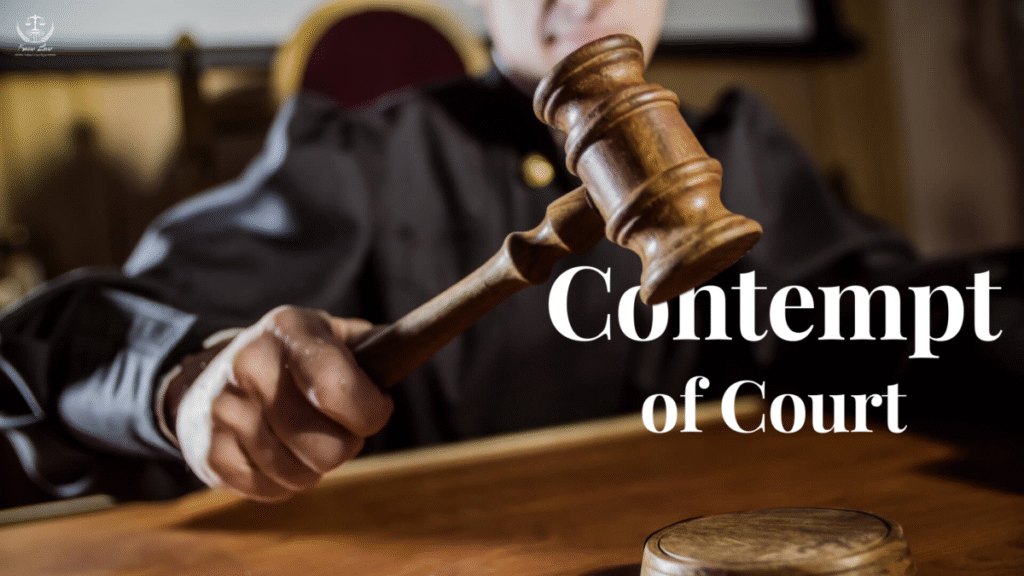
The word “contempt of court” simply means acting disrespectfully or disobediently towards a court, which entails wilfully disobeying a court order or treating the judiciary with contempt. In India, contempt of court is regulated by the Contempt of Courts Act, 1971 (hereinafter referred to as “the Act”) where under Section 2(a) of the Act, the concept of contempt of court is defined as either civil or criminal contempt. The Indian Constitution recognizes the Supreme Court as a “Court of Record” under Article 129, and empowers it with all the authority of such courts, including the ability to penalize for self-inflicted contempt. Under Article 142(2) of the Constitution of India, subject to the provisions of any law made on this behalf by Parliament, the Supreme Court shall, as respects the whole of the territory of India, have all and every power to make any order for the purpose of securing the attendance of any person, the discovery or production of any documents, or the investigation or punishment of any contempt of itself. Hence, while the Contempt of Courts Act, 1971 has been enacted to give legislative effect to the power of the Court with an objective to define and limit the powers of certain courts in punishing contempt of court and to regulate their procedure in relation thereto[i], the Constitution by itself recognizes and empowers the Court to punish for contempt of the Institution. Let us now decode the two types of contempt as recognized under the Act. Section 2(b) of the Contempt of Courts Act, 1971 defines “civil contempt” to mean wilful disobedience to any judgment, decree, direction, order, writ or other process of a court or wilful breach of an undertaking given to a court. Therefore, certain essential ingredients ought to be satisfied in order to constitute civil contempt, which are: Whether or not the act of disobedience was wilful or not is a what is adjudicated upon by the relevant Court, which varies upon the facts and circumstances of each case. In Indian Airports Employees Union v. Ranjan Chatterjee[ii], the Supreme Court held that in order to show that to constitute an offence of civil contempt within the meaning of Section 2 (b) of the Contempt of Courts Act, the disobedience of orders of the Court must be shown to be wilful and proof of mere disobedience is not sufficient. According to Supreme Court in the absence of proof of deliberate flouting of the orders of the Court, it would not be appropriate to hold it as a case of civil contempt. Criminal Contempt of Court Section 2(c) of the Contempt of Courts Act, 1971 defines “criminal contempt” to mean the publication (whether by words, spoken or written, or by signs, or by visible representation, or otherwise) of any matter or the doing of any other act whatsoever which- (i) scandalizes or tends to scandalize, or lowers or tends to lower the authority of, any court; (ii) prejudices, or interferes or tends to interfere with, the due course of any judicial proceeding; or (iii) interferes or tends to interfere with, or obstructs or tends to obstruct, the administration of justice in any other manner. From the above, the following essentials are necessary to constitute criminal contempt: The Supreme Court in the case of In re S. Mulgaokar[iii] enunciated on the principles in relation to contempt powers of the Court, imposing a caution in exercising power of contempt proceedings. [i] Preamble, Contempt of Courts Act, 1971 [ii] Indian Airports Employees Union v. Ranjan Chatterjee, (1999) 2 SCC 537 [iii] In Re Mulgoakar v. Unknown, AIR 1978 SC 727
